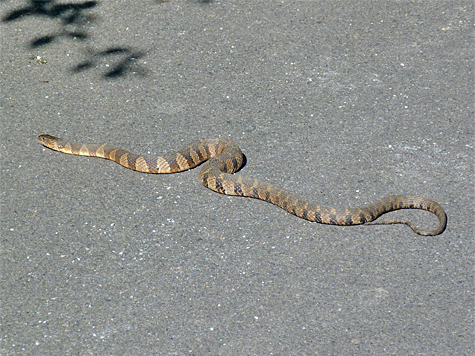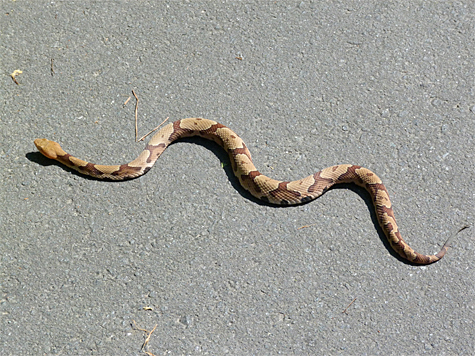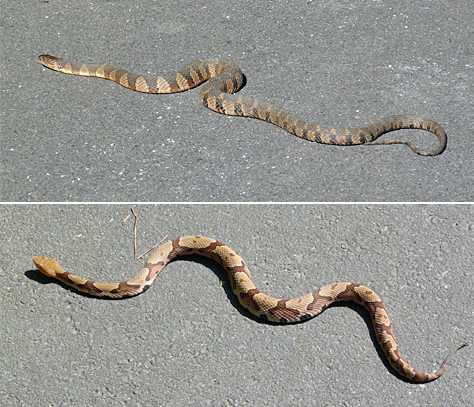It’s summertime and snakes are active. This is a repeat of a previous post from May of 2013 to refresh your memory on the identification of two common snakes in our area, both residents here at the museum.
It’s almost a daily occurrence, I’d be watching a water snake coiled up and snoozing in the grass on the north side of the Wetlands, point the snake out to someone passing by and they’d say, “That looks like a Copperhead,” or, “Is that a moccasin, cottonmouth?” or most often, “Is it poisonous?”
The answer to that statement and those questions is always no.
In explaining my no response, last question first, no snake in our area is poisonous. It’s an honest mistake but the correct word for a biting snake with fangs that injects toxins into its prey, or enemies, is venomous.
Moving forward, water moccasins, or cottonmouths as they are often called, are scarce above the fall line, or coastal plain in our state. This too is an honest mistake for some folks. The Museum, in Durham, is not very far from the fall line (just one county east) and many people who visit us live below the fall line where they are likely to encounter cottonmouths. That’s not to say that a cottonmouth has never been or never will be seen above the fall line or in Durham, but the chances are pretty slim.
The copperheads? The pictures below do a better job of replying to the statement, “That looks like a Copperhead,” than simple words.


And here they are again in direct comparison.

Putting aside the broad, copper-colored head of the bottom snake, look at the pattern. Although variable, the pattern on the northern water snake is never as clean and bright as it is on the copperhead, at least in our area.
Both patterns serve their wearer well in their respective habitats. The close banding on the water snake works well in the reflective, dappled light of a watery domain while the wide-spaced, hourglass pattern on the copperhead suits its leaf-littered wooded haunts. They’re easy to see on the pavement, but not so easy to spot in their natural habitats.
If you like to hike in the woods you’ve probably walked past more copperheads than you’d care to know about. You may have even stepped directly over one without realizing it. But that’s a story for another time.
Look at the patterns on the snakes above and you should have no problem differentiating a northern water snake from a copperhead. As I said, the water snake’s pattern is variable, some may be darker, lighter, or may even be quite red, but the pattern on the copperhead is locally consistent.
Have fun!